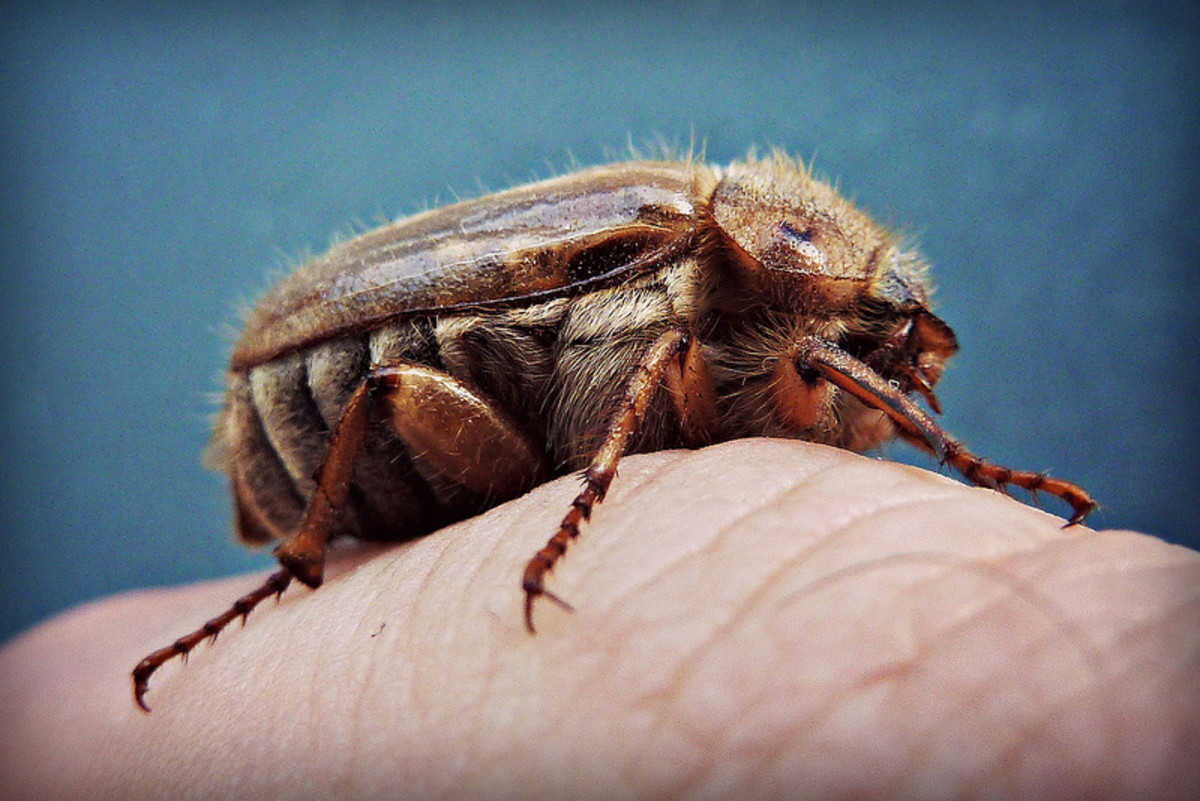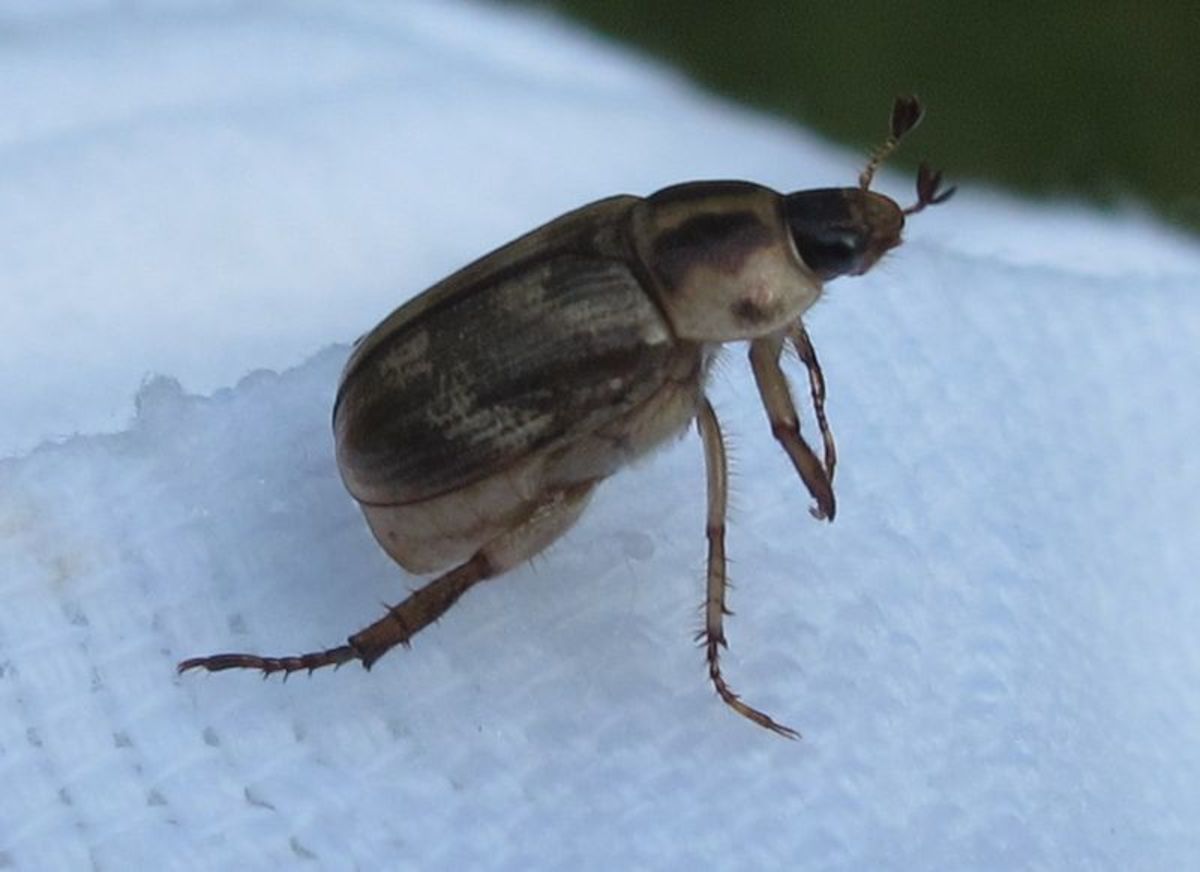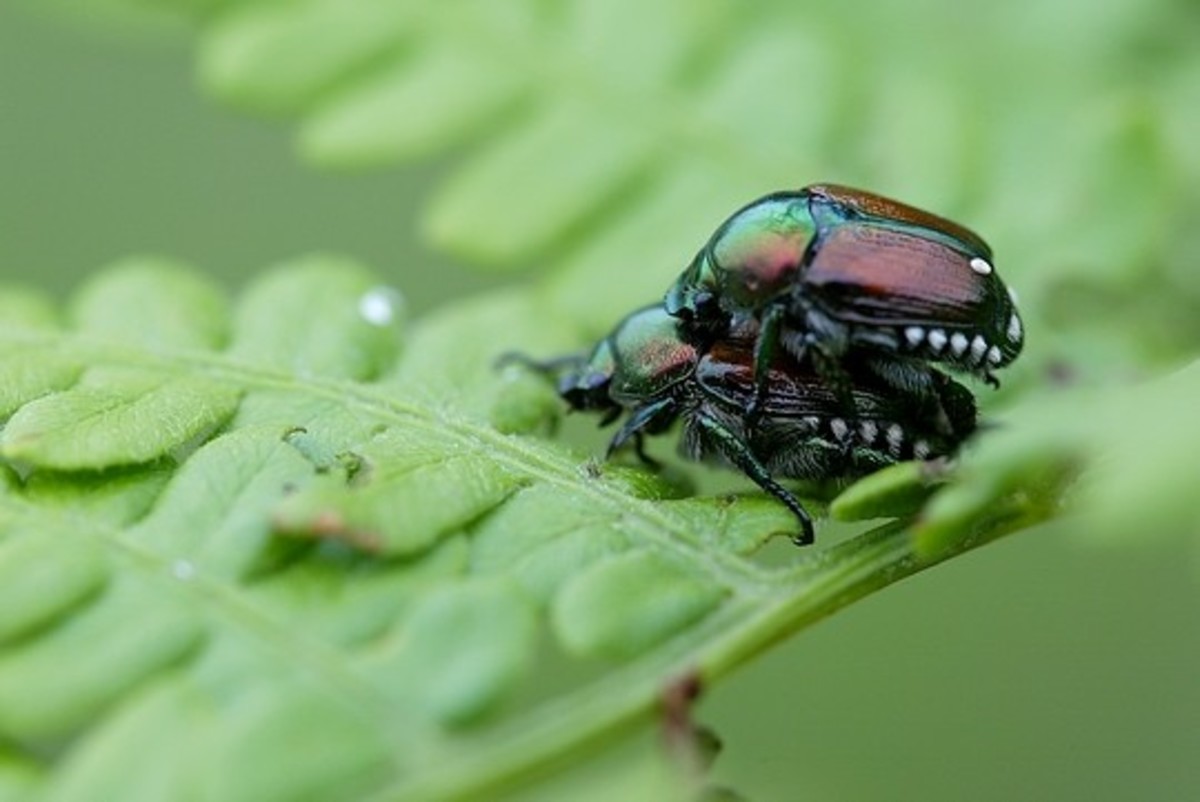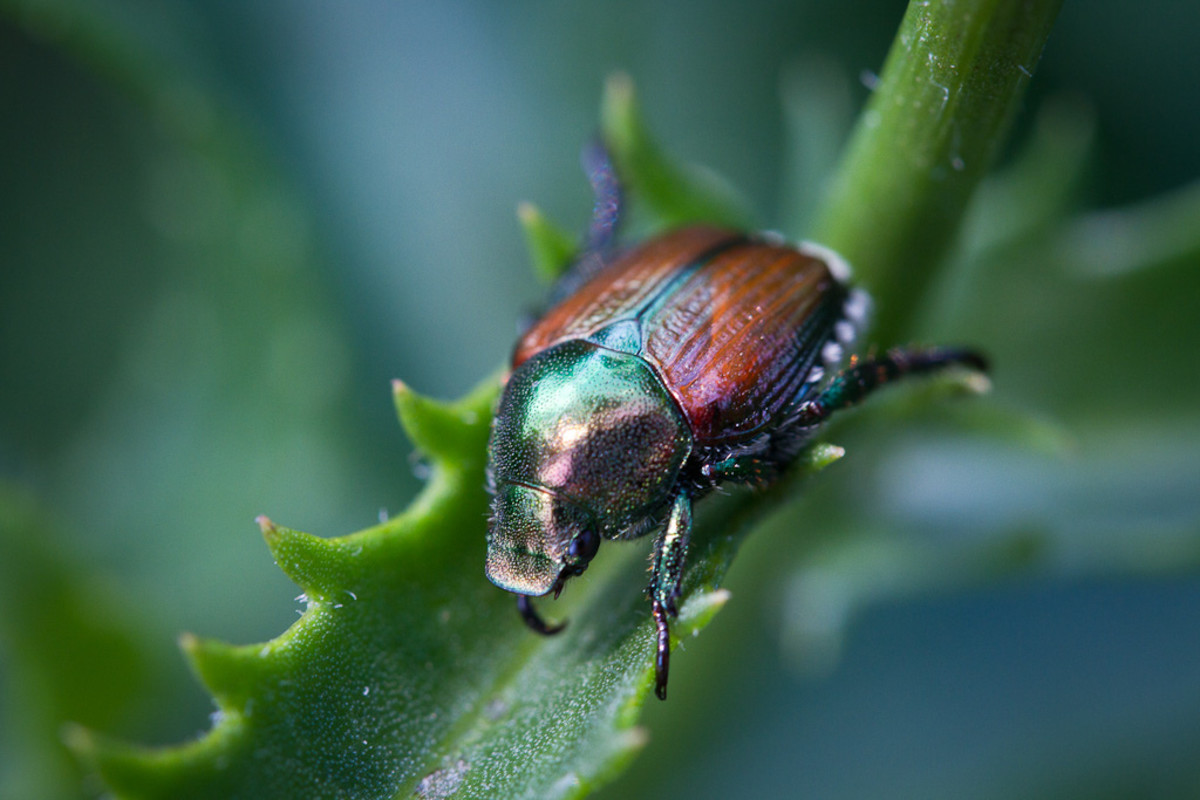Author
Frank Sturm
Frank Sturm considers himself an avid New England adventurer and has 15 years of experience in the lawn care industry.



 For further details log on website :
For further details log on website :
https://dengarden.com/pest-control/What-are-the-Types-of-Grubs-in-Your-Lawn
Frank Sturm
Frank Sturm considers himself an avid New England adventurer and has 15 years of experience in the lawn care industry.
Before trying to exterminate grubs in your lawn, it's vital to understand how the major species differ. Prior to applying insecticides, you should ask yourself: "Before I treat these lawn grubs, what am I dealing with?" and "How will this insecticide affect the grub population?"
The grubs covered in this article all have similar characteristics: They're some of the most established species across the United States. However, they also differ in unique ways.
Understanding these similarities and differences is important for homeowners and insecticide manufacturers. They help the latter develop broad-spectrum products that manage all types of lawn grubs in one application. In turn this helps homeowners save money because they only have to purchase one insecticide.
So, why are we going to devote an entire article to the types of lawn grubs if homeowners can purchase one product to manage all of them? Because it's dangerous to apply grub killer to insects you know little about. You wouldn't blindly shoot into the forest to catch dinner because you could hit a bystander. The same concept applies when treating a lawn. By blindly distributing pesticides onto your property, you may accidentally apply the wrong type of product or too much of the chemical. This could damage the environment while having little to no effect on the grubs you wish to kill. Therefore I always recommend educating yourself on the type of chemicals you plan on using.
What grub species are you most familiar with?
How Are the Four Types of Lawn Grubs Similar?
Picture the following: It's a warm Saturday night in June and you've just begun to relax in your hammock with a cold drink in hand. It's been a stressful week, so you deserve this moment of peace. As your breathing slows and your eyes drift in and out sleep you suddenly hear what sounds like a hundred bees buzzing around you. Have no fear though, they aren't attacking, and they're not bees.
What you're hearing is actually the sound of beetles mating. Many adult beetles become active right after sunset during warm, dry weather. After taking flight, they search for a mate. During this particular evening, the action is happening in your backyard. The next day, and over the course of the next month, females will lay upwards of 50 eggs roughly three to nine inches deep into your lawn.
It's a Grub Life: All lawn grubs have a similar life cycle. Most grub eggs hatch in mid-July to mid-August and immediately begin feeding on the roots of turf and surrounding plants. They then molt into their second and third instar (stages) sometime before the ground freezes. Once they sense the soil beginning to harden, they bury deeper to stay warm. As spring nears and the ground thaws, mature grubs crawl to the surface and feast again on your lawn's roots for a short time. They finally pupate and molt into adult beetles, which are the ones you hear flying around your backyard.
It's important to remember these two facts about grubs:
- All grubs feast on plant roots from roughly July until the ground freezes, and then they molt into beetles as the weather warms.
- Grubs don't care where they feed. Just because these pests have never attacked a lawn before, doesn't mean they won't attack it at some point. Lawns have no natural barriers to protect themselves from many insects including grubs. The only way to manage these aggressive populations is to apply a preventive control prior to their feeding regimen. Applying a curative pesticide (which is much stronger than a preventive one) after they've matured may also work as long as they haven't grown too much.
The following sections describe the different types of lawn grubs. I decided not to discuss how to distinguish grubs based on examining the larvae's backside because they're often hard to identify this way without a microscope.
Types of Major Grub Species

The adult form of the European Chafer. | Source
European Chafer
History: Originally from Europe, these lawn grubs were first detected in Newark, New York in the 1940s. Eventually, they spread and became one of the most common grub species east of the Mississippi.
Adult description: European Chafer grubs have a medium sized, oval body that's reddish, brown or copper in color. They have a slightly dark head, look similar to the June Beetle and grow to roughly a 1/2 inch.
Mating season: These grubs begin mating between mid-June and late July after the sun sets. Females lay around 20 to 30 eggs over the course of a month or so.
Life cycle: European Chafers live roughly one year. Eggs hatch around mid-July - although weather patterns can alter this timeline. From there, European Chafers continue to molt and feed until the ground begins to freeze. Before the soil hardens, grubs burrow deeper to stay warm and then emerge in the spring to feed again on grass roots. Finally, they molt into adults and take flight for mating season as the summer nears.

This is the adult form of the Oriental Beetle. Notice its funky antenna. | Source
Oriental Beetle
History: The Oriental Beetle is native to Japan and invaded American soil in the early 20th century. It was first detected during the 1920s in Connecticut.
Adult description: Adults are gray with black splotches.
Mating season: Similar to their counterparts, the Japanese Beetle and European Chafer, adult Oriental Beetles emerge in late June and become active in July.
Life cycle: These lawn grubs have a life cycle almost identical to the European Chafer. After mating in mid-summer, females lay their eggs in the soil. Eggs typically hatch about 14 days later, and larvae begins to immediately feed on grass roots. It takes about 17 to 25 days for a grub to molt into its second instar and around 18 to 45 to mature into its third. Most grubs hibernate while in their third instar, although some studies suggest they've so as early as their second instar.

Ever wonder what those Japanese beetles do under the stars during the warm summer? | Source

The adult form of the Japanese beetle resting on a likely food source. | Source
Japanese Beetle
History: A native to Japan, the Japanese Beetle was first detected near Riverton, New Jersey in 1916. In 1918 USDA and New Jersey authorities attempted but failed to exterminate the Japanese Beetle. In 1932 the beetles were found as far west of St. Louis, Missouri and Illinois. By 1967 19 states in the eastern U.S. were home to the critters. Currently they reside in every state east of the Mississippi except Florida.
Adult description: Japanese beetles are 7/16 inch in length. Their body has that iconic metallic green hue and oval shape with copper wings.
Mating season: These grubs mate after the sun sets between mid-June to late July. Females lay around 20 to 30 eggs over the course of a month or so.
Life cycle: Japanese Beetles' life cycle is almost identical to the European Chafer. After mating in mid-summer, females lay their eggs in the soil. Eggs typically hatch about 14 days after being placed into the ground, and the larvae begins to immediately feed on the roots of grasses and plants. It takes about 17 to 25 days for grubs to molt into their second instar and around 18 to 45 to mature into their third. Most grubs hibernate while in their third instar.
Asiatic Garden Beetle
History: Like its cousin the Japanese and Oriental Beetles, the Asiatic Beetle is also native to Japan. It was first found in New Jersey in 1922.
Adult description: Adults have a brown-red hue and are about 3/8 inches in length.
Mating season: Adults become active in July and August and are more active at night than during the day. When the sun rises, they burrow down into the soil next to plants or foliage. At night they emerge and search for a mate. After mating females lay eggs in clusters of 40 or more. Eggs hatch about two weeks later, and larvae begin to feed similar to the other grub species we previously mentioned.
Life cycle: The Asiatic Beetle burrows into the soil during the winter and feeds for a short time in the spring on the roots of plants. It then emerges, pupates in late May and early June and molts into an adult in late June and early July.
Knowledge is Power
There are many types of lawn grubs that damage properties. While a variety of pesticides exist that take out all of the grubs mentioned in one application, it's always important to understand what you're trying to manage. The more you know, the better you'll be able to keep your lawn grub-free, the environment safe and you and your family healthy.
References
"Asiatic Beetle". (n.d.). Asiatic garden beetle. Retrieved from http://extension.unh.edu/resources/representation/Resource000542_Rep564.pdf
Childs, R. (2011, 10). Asiatic garden beetle. Retrieved from http://extension.umass.edu/landscape/fact-sheets/asiatic-garden-beetle
Cranshaw, W. (2014, 01 08). Japanese beetle. Retrieved from http://www.ext.colostate.edu/pubs/insect/05601.html
"EUROPEAN CHAFERS" 7.12. (2004, 07). European chafers, japanese beetles and their damage to lawns . Retrieved from http://www.ccerensselaer.org/Libraries/Hort_Lawn_Fact_Sheets/Grubs_In_Lawns.sflb.ashx
Hazzard, R., Vittum, P., Bishop, B., Seagraves, M., & Hazelrig, A. (n.d.). Scarab beetle: Japanese, oriental and asiatic garden beetles. Retrieved from http://extension.umass.edu/vegetable/articles/scarab-beetle-japanese-oriental-and-asiatic-garden-beetles
Shetlar J., D. (1991). Control of japanese beetle adults and grubs in home lawns. Retrieved from http://ohioline.osu.edu/hyg-fact/2000/2001.html
Shetlar, D., & Niemczyk, H. D. (1999). Asiatic garden beetle. Retrieved from http://bugs.osu.edu/bugdoc/Shetlar/factsheet/turf/Asiaticgardenbeetle.htm
United States Department of Agriculture. (2010, 05).Japanese beetle program manual for airports. Retrieved from http://www.aphis.usda.gov/import_export/plants/manuals/domestic/downloads/japanese_beetle.pdf
https://dengarden.com/pest-control/What-are-the-Types-of-Grubs-in-Your-Lawn





No comments:
Post a Comment